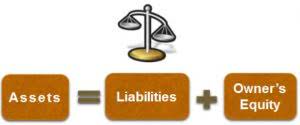Equity Multiplier: A Detailed Examination of its Role in Financial Analysis

Investors can also use the https://www.bookstime.com/articles/invoice-matching equity multiplier to assess a company’s ability to generate cash flow. Companies with higher equity multipliers may have difficulty generating enough cash flow to cover their debt payments. On the other hand, companies with lower equity multipliers may have an easier time generating enough cash flow to cover their debt payments. Once you have the total assets and total equity figures, you can calculate the equity multiplier by dividing the total assets by the total equity.

Equity Multiplier Formula
- Repeated and consistent high equity multiplier figures could raise red flags regarding a company’s financial sustainability since it indicates a heavier reliance on external borrowing.
- The equity multiplier is a key component of the DuPont Analysis, which breaks down return on equity (ROE) into profit margin, asset turnover, and financial leverage.
- The reason is the fact that it is more favorable, being less dependent on debt financing and no high debt servicing costs.
- A low equity multiplier is generally more favorable because it means a company has a lighter debt burden.
- A higher ratio means a larger portion of a company’s assets is funded by debt, implying higher financial risk.
- If the ratio is high, it indicates that more assets were not funded by equity, but rather by debt.
- This ratio is used to assess a company’s financial health and to compare it to other companies in the same industry.
In general a low Equity Multiplier is a good sign because it means that a higher proportion of equity has been used to acquire assets, as opposed to funding assets with debt. However, the absence of significant debt could mean that the company lacked the credit rating to issue debt or take out loans. In the example above, along with the equity multiplier, we get an overview of operational efficiency (i.e., 20%) and efficiency of the utilization of the assets (i.e., 50%). Under DuPont analysis, we need to use three ratios to find out the return on equity.
- Equity multiplier is a leverage ratio that measures the portion of the company’s assets that are financed by equity.
- A company with a high equity multiplier is typically seen as riskier to lenders and creditors, as it indicates a high level of debt relative to equity.
- If a company has a high equity multiplier, it borrows to finance purchases, so its debt burden is higher.
- Avid investors keep a keen track on the key performance indicators of a company which help them in decision-making.
- It’s likely to continue its operations, provide stability to employees, contribute to economic growth, and serve its societal obligations.
How can I use market capitalization to evaluate a stock?
- Consider the equity multiplier ratio to be just an indicator of the soundness of the financial base of a company.
- Basically, this ratio is a risk indicator utilized by investors to decide how leveraged the company is.
- Both ratios revolve around the idea of assessing a company’s financial leverage.
- That means the 1/8th (i.e., 12.5%) of total assets are financed by equity, and 7/8th (i.e., 87.5%) are by debt.
- Samsung had total assets of ₩426 trillion at the end of the 2021 financial year and stockholder equity of ₩296 trillion, giving it a multiplier of 1.4.
- Imagine that your total asset value is of $1,000,000, and the total equity is $900,000.
- Industry norms play a key role in interpreting this ratio, as sectors differ in their acceptable levels of leverage.
In conclusion, the equity multiplier is a useful tool for assessing a company’s financial health. It should be used in conjunction with other financial ratios and metrics to get a complete picture of a company’s financial situation. If a company’s equity multiplier is greater than the average for its industry and in relation to its peers, net sales this indicates that the company is using more debt to finance its assets.

The Financial Modeling Certification

That said, a company can always generate a higher ROE by loading up on debt, so looking at how the equity multiplier plays a role in producing ROE is useful. A low equity multiplier implies a relatively small amount of debt (as the share of assets financed by shareholders’ equity is relatively high). Conversely, a high ratio suggests a relatively high amount of debt (since the share of assets financed by shareholders’ equity is relatively low). Discover the significance of the equity multiplier in finance, its calculation, and its impact on financial analysis and industry comparisons. With the DuPont analysis, investors can compare a firm’s operational efficiency by determining how equity multiplier they are using their available assets to drive growth. If a business has a high equity multiplier with a considerable amount of debt yet has the revenue to cover the high debt servicing costs, then it may still be a healthy company.
- Common Shareholder’s Equity covers no more than the common shareholder’s funds (preference shares should not be included as it comes with a fixed obligation).
- The use of equity multiplier in risk management comes from its ability to help companies understand their levels of risk and financial stability.
- A higher equity multiplier signifies greater use of debt for asset financing, which can amplify returns on equity but also increase financial risk.
- Explore the concept of Capital Accumulation, a cornerstone of capitalist economies.
- In other words, Illinois Tool Works is excellently sweating its assets, even if those assets were supported by taking on more debt.
Assessing Risk in the Banking Industry
A bank with a high equity multiplier can be considered as quite risky because it has an excessive level of debt relative to its equity. The regulatory bodies, such as the Federal Reserve or the Office of Comptroller of the Currency, monitor the equity multipliers of banks to ensure they do not exceed a particular threshold. Banks are expected to maintain an appropriate balance between their debt and equity. On the other hand, a lower equity multiplier suggests that the company adopts a more conservative financing strategy, thereby reducing its exposure to financial risk. Such firms are better positioned to manage meaningful financial crises and market downturns, enhancing their sustainability.

